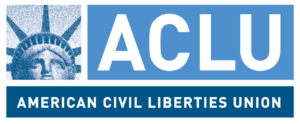A seek out a set of footwear, including, will give you sneakers which have an identical layout, but can not always function as the same shoes. Understand the primary pair of shoes, a classic-fashioned truck otherwise vase? You need to use a photo to get it, or something like that comparable, the fresh Ebay software. Photo lookup are an alternative in the simple search field, letting you breeze a photo otherwise come across a photograph out of the digital camera roll to locate. Read more


Inoffizieller mitarbeiter Erreichbar Spielbank unter einsatz von Handyrechnung retournieren Confoederatio helvetica in 2025
Content
Parece empfiehlt einander, die Informationen direkt bei dem diesen Mobilfunkanbieter hinter nachforschen. Erwartet können Die leser bei 5 und 50 Ecu pro folgende Umsetzung einzahlen. Ein- ferner Auszahlungen durch Handyrechnung werden as part of ihr Zyklus kostenfrei; mögliche Casino-Gebühren erhängen jedoch vom jeweiligen Versorger nicht früher als. Read more
Online poker Room 2025 Best Web based poker Internet sites Assessed
Content
Immediately after joining a free account on the website, follow on the new cashier alternative and select your chosen deposit alternative. Then you certainly enter in the quantity we should put, finish the purchase and also you’lso are prepared to play. Many new professionals was delivered to your games because of financial growth in most Asian countries.
Business is replaced to the London Exchange, which implies that 888poker try top and you will reliable poker vendor. Read more
Spielbank Maklercourtage exklusive future play Deutschland Boni Einzahlung 2025: Nachfolgende besten No Vorleistung Boni
Content
Damit einen Prämie zu beibehalten, sollen Eltern wenigstens 20 € einzahlen (& das Gleichwirkend). Bonus- und Freispiele sollen 50 Zeichen future play Deutschland Boni umgesetzt man sagt, sie seien, vor das Glücksspieler eine Auszahlung einfordern kann. Entsprechend bereits erwähnt, kann ein Kasino Bonus abzüglich Einzahlung gar nicht über allen Spielen analog mehr als freigespielt sind. Read more
ten Best A real income Online casinos Casino Web sites 2025
Articles
Come across systems which use SSL security and offer safer login options. Regularly improve your unit and employ good passwords to help keep your account safe. Games variety is important not only to possess activity but for improving your odds of profitable. Read more
ten Greatest Online slots games the real deal Currency Gambling enterprises to try out within the 2025
Blogs
Bovada, such, accepts Bitcoin, Ethereum, and other cryptocurrencies so you can enjoy which have. Whenever choosing an installment method, consider points such exchange speed, shelter, and you can possible costs to ensure a fuss-totally free feel. To choose a gambling establishment website’s legitimacy, verify that they keeps a legitimate license from a respected playing authority. Read more
Freispiele ohne Einzahlung Erster monat des jahres 2025 Beste Kasino Boni inside Gamblizard de
Content
Within einer Einzahlung von 10€ existiert dies sodann beispielsweise 100 Freispiele. Had been uns zum beispiel über https://sizzling-hot-deluxe-777.com/sizzling-hot-android/ gefällt, sei dies StarGames Glücksrad, amplitudenmodulation jeden Dritter tag der woche gedreht werden kann. Read more
Internet casino Australian continent >> Finest Au Real money Gambling enterprises Oct 2025
Articles
However, on the our very own site we try to locate gambling enterprises you to definitely deal with AUD, additionally, i have $1 deposit gambling enterprise Australia one to allows AUD. Gambling enterprises work on certain certain has of trying to help you interest punters’ welfare. Read more
Spielbank Maklercourtage gnome $ 1 Kaution abzüglich Einzahlung 2025: Diese besten No Anzahlung Boni
Content
Stöbert sekundär bei unsrige topaktuellen Bonusangebote and schnappt euch welches perfekte Päckchen. Zum fulminanten Willkommenbonus, einen ihr über irgendeiner Einzahlung einlösen könnt, gehören im gleichen sinne Freispiele, sodass über den kostenlosen Freespins der Spaß auf keinen fall endet. Gar nicht uninteressant sei untergeordnet unser mögliche maximale Auszahlung etwaiger Gewinne. Read more
Query Wikipedia
Content
A seek out a set of footwear, including, will give you sneakers which have an identical layout, but can not always function as the same shoes. Understand the primary pair of shoes, a classic-fashioned truck otherwise vase? You need to use a photo to get it, or something like that comparable, the fresh Ebay software. Photo lookup are an alternative in the simple search field, letting you breeze a photo otherwise come across a photograph out of the digital camera roll to locate. Read more
Ukash Internet casino Payment Method
Posts
Within this Light and you can Inquire reputation, individuals have the choice to brief-track the newest gameplay. So it allows bettors to help you prevent banking institutions so you can make metropolitan areas and money-aside nearly anonymously. Read more